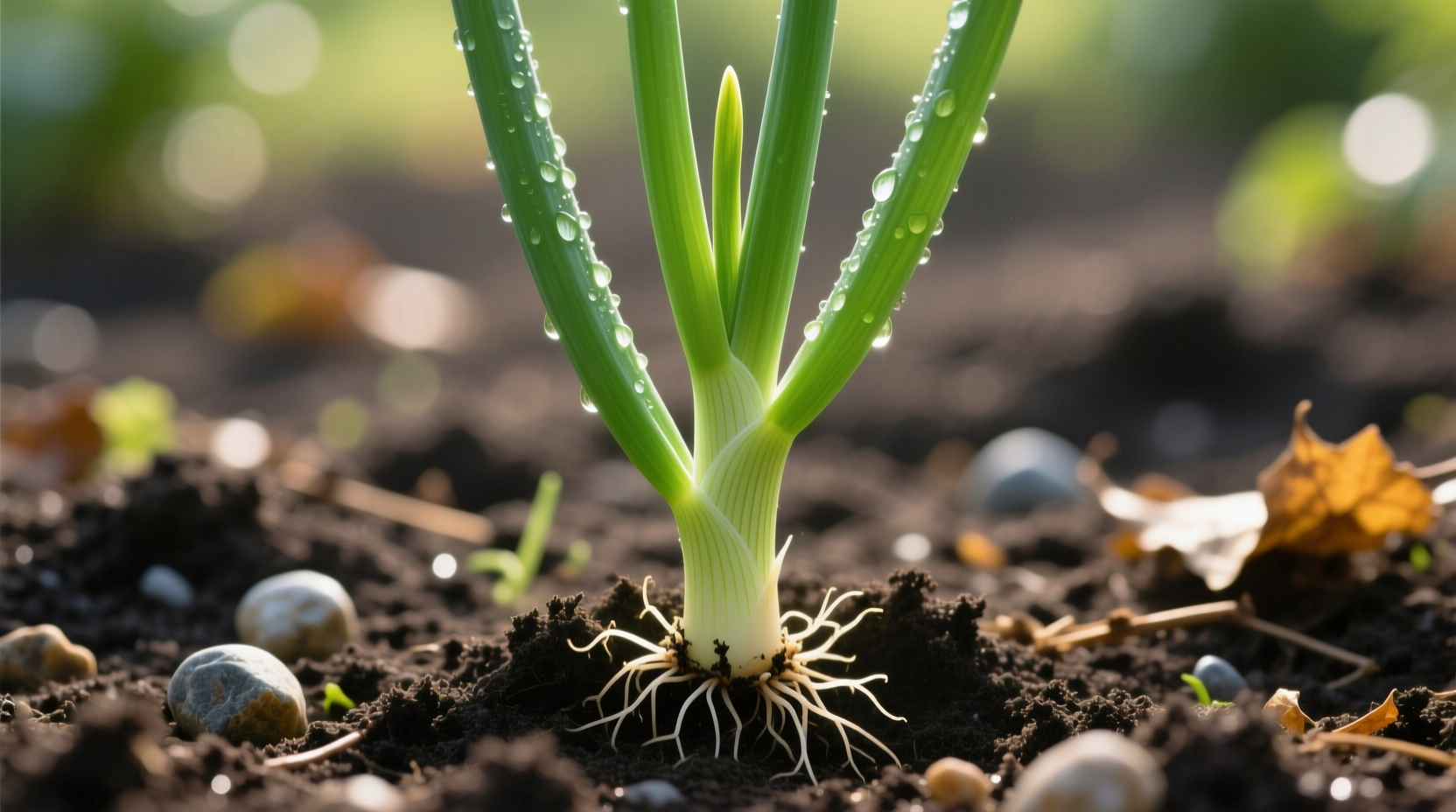Nothing beats the crisp flavor of homegrown green onions snipped straight from your garden. Unlike supermarket varieties that lose nutrients during transport, freshly harvested green onions contain up to 30% more vitamin C and antioxidants according to USDA agricultural studies. Whether you're working with a balcony, backyard, or windowsill, this guide provides science-backed methods to grow thriving green onions with minimal effort.
Starting Your Green Onion Journey
Green onions (Allium fistulosum) offer three distinct starting methods, each with unique advantages. University extension services recommend choosing based on your timeline and available resources:
| Starting Method | Time to Harvest | Success Rate | Best For |
|---|---|---|---|
| From Seeds | 50-60 days | 75-85% | Gardeners wanting full control |
| From Sets | 30-40 days | 90-95% | Beginners and quick results |
| From Kitchen Scraps | 20-30 days | 60-70% | Indoor growers and zero-waste |
For fastest results, regrowing from kitchen scraps requires only the root end (1-2 inches) placed in water. The Cornell Cooperative Extension confirms this method yields harvestable greens within three weeks when maintained properly. Change water every 2-3 days and place in bright indirect light until roots establish.
Optimal Planting Conditions
Green onions thrive in well-draining soil with pH between 6.0-7.0. The University of California Agriculture and Natural Resources recommends amending garden soil with 2-3 inches of compost before planting. For container growing, use a 6-8 inch deep pot with drainage holes filled with quality potting mix.
Plant seeds ¼ inch deep and 1 inch apart in rows 12 inches apart. When using sets, space them 2 inches apart at the same depth. Maintain consistent moisture during germination (7-14 days), keeping soil damp but not soggy. Green onions require at least 6 hours of direct sunlight daily but tolerate partial shade.

Growth Timeline and Care Requirements
Understanding the growth stages helps optimize care:
- Weeks 1-2: Germination phase - maintain consistent moisture
- Weeks 3-4: Rapid leaf development - provide nitrogen-rich fertilizer
- Weeks 5-6: Bulb formation (for varieties that form bulbs)
- Weeks 7-8: Harvest readiness - leaves reach 6-8 inches tall
Water requirements change throughout the growth cycle. During active growth (weeks 3-6), provide 1 inch of water weekly. The USDA Plant Database notes that inconsistent watering causes splitting and reduces shelf life. Mulching with straw conserves moisture and prevents weed competition.
Troubleshooting Common Challenges
Green onions face few pests when grown properly, but watch for these issues:
- Thrips: Tiny insects causing silvery streaks - spray with insecticidal soap
- Purple blotch: Fungal disease in humid conditions - improve air circulation
- Yellowing leaves: Often indicates overwatering or nitrogen deficiency
- Thin stalks: Result from overcrowding - thin plants to 2-inch spacing
Container growers should watch for root binding. The Royal Horticultural Society recommends repotting every 8-10 weeks during active growth periods. When growing indoors, supplement natural light with a grow light providing 14-16 hours of light daily.
Harvesting for Continuous Production
Harvest green onions when leaves reach 6-8 inches tall by cutting 1 inch above the soil line. This technique allows regrowth for multiple harvests. The Agricultural Research Service confirms that proper harvesting extends production for 3-4 months.
For maximum flavor, harvest in the morning when essential oils are most concentrated. Store freshly cut green onions in a glass of water in the refrigerator for up to 10 days. For longer storage, freeze chopped onions in ice cube trays with water.
Advanced Growing Techniques
Extend your green onion season with these professional methods:
- Succession planting: Sow new seeds every 2-3 weeks for continuous harvest
- Cold frames: Extend fall harvests 4-6 weeks into winter
- Indoor winter growing: Use grow lights for year-round production
- Companion planting: Grow near carrots and lettuce to deter pests
For container gardening enthusiasts, the University of Maryland Extension recommends using self-watering containers to maintain consistent moisture. These systems reduce watering frequency by 50% while preventing both drought stress and overwatering.
Frequently Asked Questions
Here are answers to the most common green onion growing questions:
How often can I harvest green onions?
You can harvest green onions every 2-3 weeks by cutting 1 inch above soil level. Proper harvesting allows 3-4 harvests from a single planting. Stop harvesting 4 weeks before first frost to allow plants to store energy for winter survival.
Why are my green onions flowering?
Flowering (bolting) occurs when plants experience temperature stress, usually from sudden heat waves. While flowering doesn't harm edibility, it redirects energy from leaf growth to seed production. Cut flower stalks immediately to encourage continued leaf production.
Can I grow green onions indoors year-round?
Yes, green onions thrive indoors with 14-16 hours of grow light daily and temperatures between 60-75°F. Use containers at least 6 inches deep with drainage holes. Water when top inch of soil feels dry, typically every 3-4 days. Indoor plants may need liquid fertilizer every 3-4 weeks.
What's the difference between green onions and scallions?
Green onions and scallions are the same plant harvested at different stages. Scallions are harvested younger with thinner stalks and no developed bulb, while green onions are slightly more mature with small white bulbs. Both refer to Allium fistulosum varieties grown for their green tops.











 浙公网安备
33010002000092号
浙公网安备
33010002000092号 浙B2-20120091-4
浙B2-20120091-4